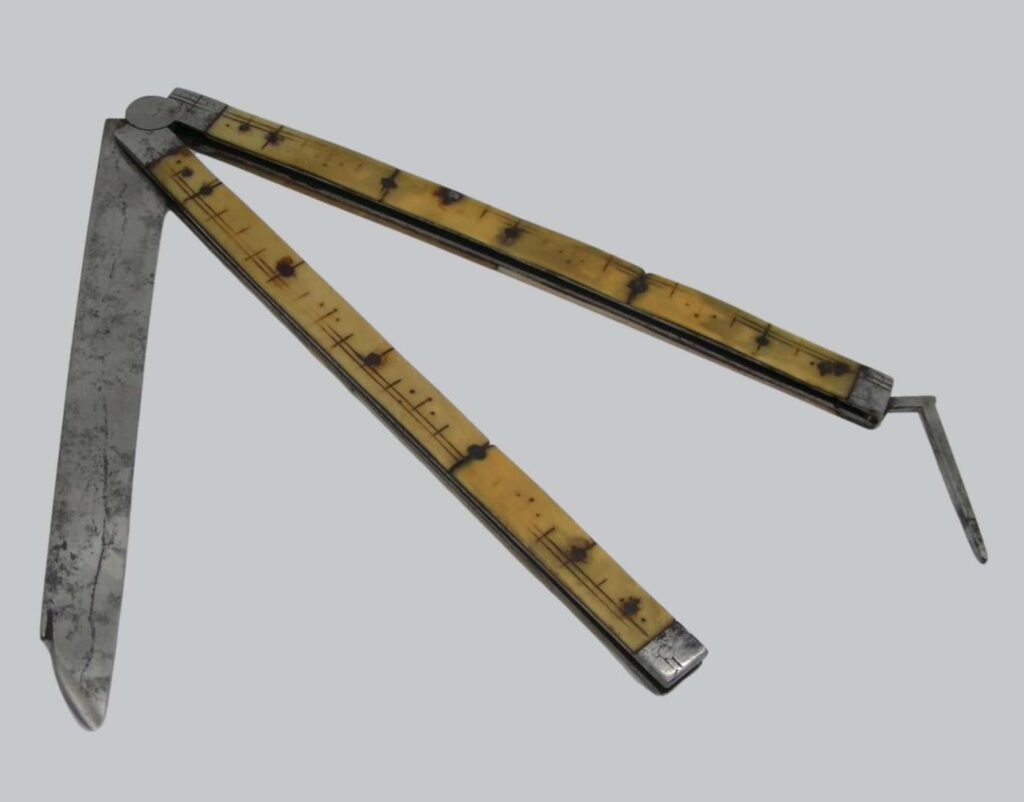History of the Butterfly Knife
TLDR: The butterfly knife’s origin is debated between the Philippines (800 AD) and France (1700s), but it evolved globally, with its name reflecting its design and history.
As a knife enthusiast, I’ve always been fascinated by the butterfly knife’s graceful dance between form and function. The way its twin handles pirouette around the blade, revealing a lethal edge in a mesmerizing display of skill, never fails to captivate me. Known by many names – balisong, fan knife, or Batangas knife – this remarkable tool has a history as intricate as its design. I’m constantly amazed by how such a simple concept can embody so much complexity and cultural significance.
Origins and Early Development of the Butterfly Knife
The origins of the butterfly knife are shrouded in mystery, with two main theories vying for historical supremacy. As a knife enthusiast, I find this debate fascinating, and it’s one of the reasons I’m drawn to the balisong’s rich history.
The Philippine origin theory posits that the butterfly knife emerged around 800 AD in the Philippines. This theory suggests that the knife developed organically from local craftsmanship and necessity. The name “balisong” itself is believed to be derived from Tagalog words, lending credence to its Filipino roots.
Conversely, the French origin theory proposes that the knife was invented in France between 1500 and 1700. This theory draws a connection between the butterfly knife and a French measuring tool called the “Pied Du Roi” or “foot of the king,” which bore a striking resemblance to the modern balisong. Proponents of this theory argue that Spanish sailors, allied with France at the time, may have introduced the knife to the Philippines during their voyages.
Regardless of its true birthplace, the butterfly knife found early applications in various practical domains. In the Philippines, it became an indispensable tool for farmers and fishermen. Its versatility allowed for quick deployment in tasks such as:
- Cutting rope
- Opening coconuts
- Scaling fish
Beyond its utilitarian uses, the butterfly knife also found a place in martial arts and self-defense. It was incorporated into Filipino martial arts like Kali and Escrima, where practitioners honed their skills in wielding this unique weapon. The knife’s distinctive design allowed for rapid deployment and complex manipulation techniques, making it a formidable tool in close-quarters combat.
To illustrate the contrasting theories of the butterfly knife’s origin, consider the following comparison:
| Aspect | Philippine Theory | French Theory |
| Time Period | Circa 800 AD | 1500-1700 AD |
| Evidence | Cultural significance, local craftsmanship | Similarity to “Pied Du Roi” tool |
| Spread | Indigenous development | Introduced by Spanish sailors |
When Was The Butterfly Knife Invented?
The timeline of the butterfly knife’s invention is a complex puzzle, with conflicting claims from two different regions and periods. As someone who enjoys exploring historical debates, I find this particular topic endlessly intriguing because it highlights how tools evolve across cultures and time.
The Philippine claim dates the butterfly knife, or balisong, back to around 800 AD. According to oral histories, Filipino craftsmen developed the knife as a practical tool for daily tasks and self-defense. However, there is no physical evidence to substantiate this early timeline, and much of the claim relies on tradition passed down through generations.
In contrast, the French claim places the invention of the butterfly knife between the late 1600s and early 1700s. A key piece of evidence supporting this theory is a 1710 French book titled Le Perret, which contains an illustration resembling a modern balisong. This documented reference provides a more concrete timeline for the knife’s existence in Europe. Proponents of this theory argue that French sailors or traders may have introduced the design to the Philippines later in history.
The earliest documented mass production of butterfly knives occurred in the Philippines during the early 1900s. Filipino craftsmen in Batangas province began producing these knives on a larger scale, solidifying their reputation as experts in balisong craftsmanship. This period marked a significant turning point in the knife’s history, as it transitioned from being a locally crafted tool to a widely recognized product.
To better understand these timelines, here’s a comparison:
| Timeline | Claim | Evidence |
| Circa 800 AD | Philippines | Oral traditions; no physical documentation |
| Late 1600s–1700s | France | Le Perret (1710), illustration resembling a butterfly knife |
| Early 1900s | Philippines | Mass production documented in Batangas |
Who Invented The Butterfly Knife?
The question of who invented the butterfly knife remains one of the most debated aspects of its history. As someone who enjoys unraveling historical mysteries, I find this topic particularly compelling because it reflects the ingenuity of different cultures and their interpretations of a single tool.
Many believe that the butterfly knife, or balisong, was invented by Filipino craftsmen in Batangas province. This region, particularly the Balisong area in Taal, is renowned for its blade-making tradition. According to local accounts, the first balisongs were crafted as early as 1905, with Perfecto de Leon often credited as a pivotal figure in their development. The knives were initially made entirely from buffalo horn and later evolved to incorporate brass and steel. While the Philippines is widely associated with the balisong, much of this attribution is based on oral tradition rather than documented evidence.
An alternate theory suggests that the butterfly knife originated in France between the 1500s and 1700s. Advocates of this theory point to the “Pied Du Roi,” a French measuring tool that closely resembles a butterfly knife. This tool featured folding handles and a blade-like extension, making it a plausible precursor to the modern balisong. Proponents argue that Spanish sailors, allied with France during this period, may have introduced the design to the Philippines during their travels. However, like the Philippine claim, this theory lacks definitive proof.
The lack of concrete evidence for either claim has fueled an ongoing debate among historians and enthusiasts. While Filipino tradition emphasizes the balisong’s deep roots in local craftsmanship, French documentation like Le Perret (1710) provides a stronger historical record. The truth may lie somewhere in between, with both cultures contributing to its evolution over time.
To clarify these competing claims, here’s a comparison:
| Origin | Key Proponent | Evidence | Limitations |
| Philippines | Batangas craftsmen | Oral tradition; early 1900s production | No physical evidence before 1905 |
| France | French inventors | “Pied Du Roi” resemblance; Le Perret (1710) | No direct link to modern balisongs |
Why Is It Called a Butterfly Knife?
The nomenclature of the butterfly knife is as fascinating as its mechanics. This iconic folding knife goes by two primary names, each with its own intriguing etymology that reflects its cultural and visual characteristics.
The term “balisong” is deeply rooted in Filipino language and culture. It’s derived from the Tagalog words “baling sungay,” which literally translate to “broken horn”. This name originates from the knife’s early construction, where the handles were crafted from animal horns, particularly those of water buffalos (carabao) or deer. The use of these materials speaks to the resourcefulness of early Filipino craftsmen and their ability to create functional tools from readily available resources.
The more widely recognized moniker, “butterfly knife,” has a more recent and visually-inspired origin. This nickname gained popularity in the 1980s, largely due to the marketing efforts of the knife company Benchmade. The term perfectly captures the knife’s distinctive opening action, where the two handles unfold like butterfly wings to reveal the blade. Benchmade’s logo at the time featured a butterfly, which further cemented the association between the knife’s movement and the graceful insect.
To illustrate the dual naming convention of this knife, consider the following comparison:
| Name | Origin | Meaning | Cultural Context |
| Balisong | Filipino | “Broken horn” | Reflects original materials and craftsmanship |
| Butterfly Knife | Western | Visual resemblance | Popularized by modern marketing and visual appeal |
Final Thoughts
After diving deep into the butterfly knife’s rich history, I’m left with a sense of wonder at its enduring appeal. Whether it originated in the Philippines or France, the balisong has transcended its humble beginnings to become a global icon of craftsmanship and skill. In my opinion, the ongoing debate about its true origins only adds to its mystique.

